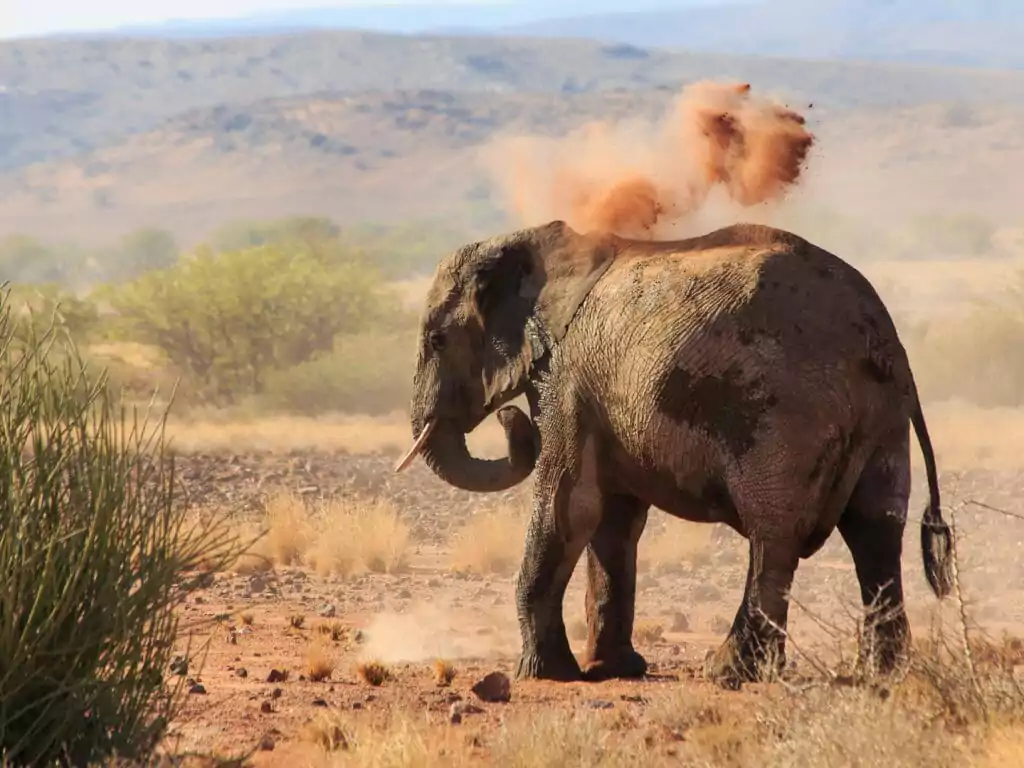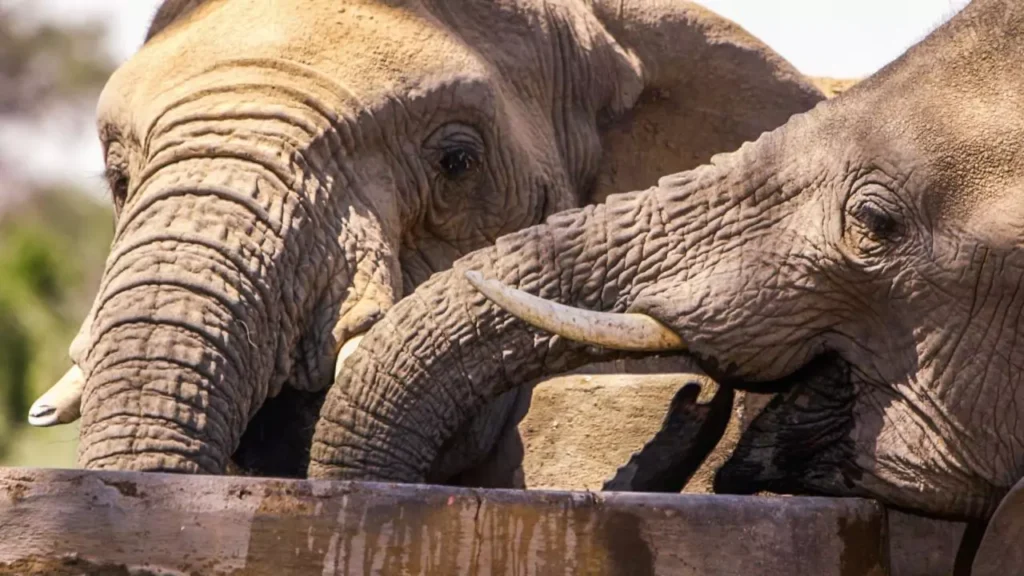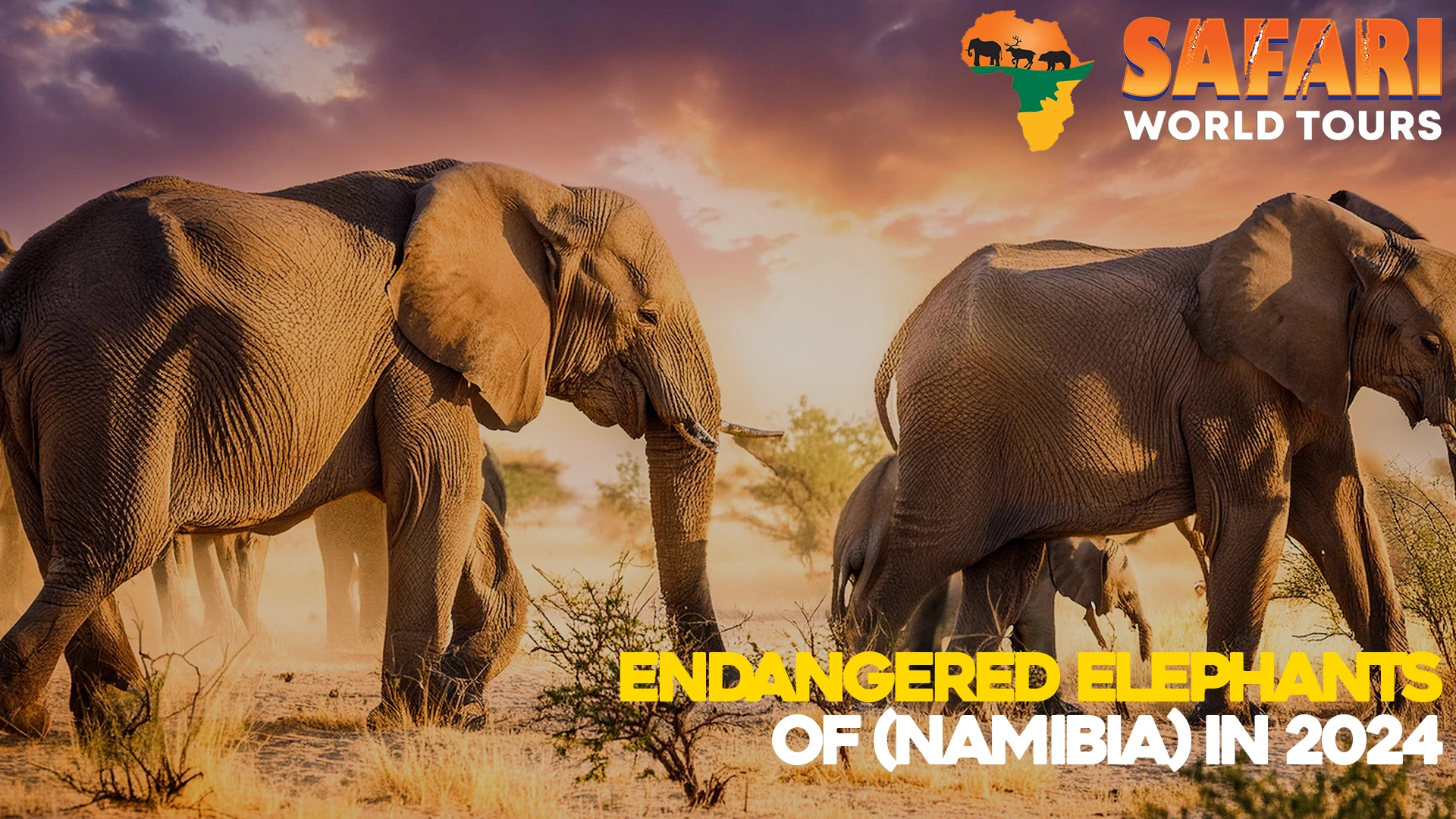Namibia is a beautiful country that boasts a great number of desert-adapted wildlife. Greatly worth mentioning is the Namibia desert-adapted elephants (Loxodonta africana) are not distinct species but are unique for their desert adaptability endangered elephants.
It is their desert adaptability that differentiates them from other elephants across the world. Interestingly, the desert-adapted elephant can only be found in Namibia and Mali. These elephants can be found in the Damaraland and Kaololand region of Namibia, which spans over 115,154 km2 of arid lands with endangered elephants.
This unique elephant has caught the attention of the International Union for the Conservation of Nature (IUCN), which has selected it as a priority for the nation and international conservation.

The desert elephants a smaller in size and possess lightly longer trunks that enable them to dig deep into the desert sand in search of underground water. They easily store water in their throat for a long period compared to other elephants.
However, they are known to consume less water and drink water between 3 to 4 days; this is far lower compared to other elephants that drink over 200 liters of water per day endangered elephants.
The desert elephants do not root up trees and destroy plants like others hoping to return to them in the future. With the scarcity of plants and water, they have learned to survive on the limited resources available
THE ENDANGERED DESERT ELEPHANT

The population of desert elephants used to be very large, but poaching activities have continued to threaten the existence of this wonderful wildlife. In recent years the records have shown a drastic reduction in the population to fewer than 300 as of 1990.
The desert elephants are not held or limited by boundaries; hence they roam across territories, thereby conflicting with the local inhabitants. The conflict between the elephants and humans is also attributed to the endangerment of these elephants, especially during attacks on endangered elephants.
Also, the living space of these elephants is curtailed by decreasing space due to modernization and expansion of human territories due to farming activities, causing the elephants to recede into distant lands.
Today, the effort of the Namibian government and the Ministry of Environment and Tourism has been a positive yield in the campaign against poaching and other activities that further endanger the existence of these magnificent wildlife-endangered elephants.
The thriving population of the desert-adapted elephant continues to grow, and recent statistics have been estimated to reach nearly 600.
However, reports of trophy hunting were reported as the government was said to issue hunting permits to some people to hunt down these elephants. However, the practice of trophy hunting is tightly regulated by the Ministry of Environment and Tourism (MET).
The government’s vision and immense contribution to community-based conservation strategy have seen a sporadic increase in wildlife in a remarkable way. The desert-adapted elephant is worth seeing in this land of sweeping beauty and breathtaking landscape. While you tour the amazing safari, you can also see the endemic dune and the amazing desert-adapted lion-endangered elephants.
CONCERNS RELATED TO THE ENDANGERED ELEPHANTS
According to the latest estimates, there are only about 600 desert-adapted elephants left in Namibia, making them one of the most endangered elephant populations in the world. The Namibian government has taken steps to protect these elephants by implementing laws to deter poaching and promoting community-based conservation programs for endangered elephants.
These programs involve local communities in conservation efforts, creating incentives for them to protect elephants and their habitats.

Despite these efforts, the survival of these elephants remains uncertain. As climate change continues to exacerbate the harsh environmental conditions in which they live, their food and water sources are becoming increasingly scarce.
Additionally, the expansion of human settlements and agriculture is further encroaching on their habitat, leading to increased human-wildlife conflict and endangered elephants.
To ensure the survival of the desert-adapted elephants in Namibia, concerted efforts must be made to address the root causes of their decline.
This includes increasing protection measures, creating sustainable livelihoods for local communities that are dependent on natural resources, and promoting conservation awareness among the general public. By working together, we can ensure that these magnificent creatures continue to roam Namibia’s desert landscapes for generations to come endangered elephants.
FAQs
Q: Why are desert-adapted elephants endangered in Namibia?
A: The desert-adapted elephants in Namibia are endangered due to a combination of factors, including poaching for their ivory, habitat loss and fragmentation, and human-wildlife conflict.
Q: How many desert-adapted elephants are left in Namibia?
A: The latest estimates suggest that approximately 600 desert-adapted elephants are remaining in Namibia.
Q: What is the Namibian government doing to protect the desert-adapted elephants?
A: The Namibian government has implemented laws to deter poaching and promote community-based conservation programs. These programs involve local communities in conservation efforts, creating incentives for them to protect elephants and their habitats.
Q: How can I help protect the desert-adapted elephants in Namibia?
A: You can support conservation organizations working to protect elephants in Namibia, such as the Save the Rhino Trust or the Elephant Human Relations Aid. Additionally, you can spread awareness about the plight of these elephants and the importance of conservation efforts.
Q: What are the biggest threats to the survival of desert-adapted elephants in Namibia?
A: The biggest threats to the survival of desert-adapted elephants in Namibia are habitat loss and fragmentation, climate change, and human-wildlife conflict. These factors are leading to a decline in food and water sources, as well as increased competition with humans for resources.
Q: Are there any conservation efforts underway to protect the desert-adapted elephants in Namibia?
A: Yes, there are several conservation efforts underway in Namibia to protect the desert-adapted elephants. These efforts include community-based conservation programs, anti-poaching measures, and research to better understand the elephants’ behavior and ecology.


